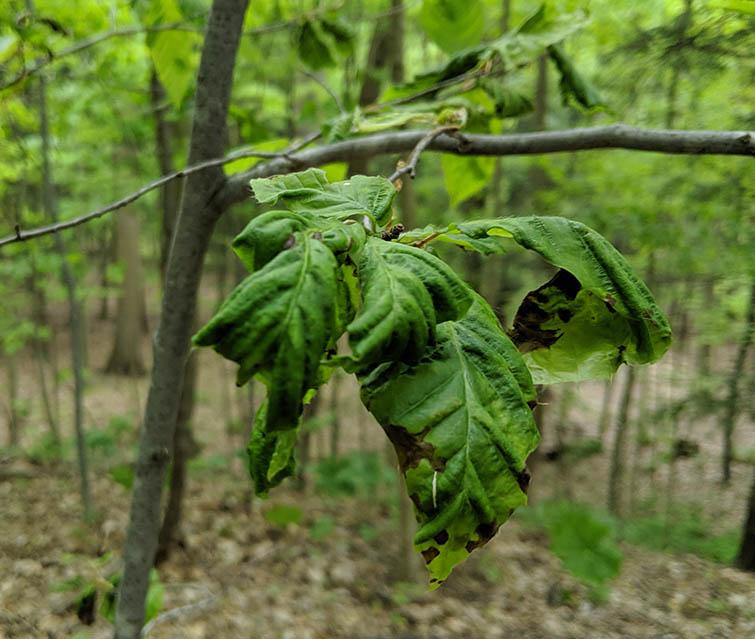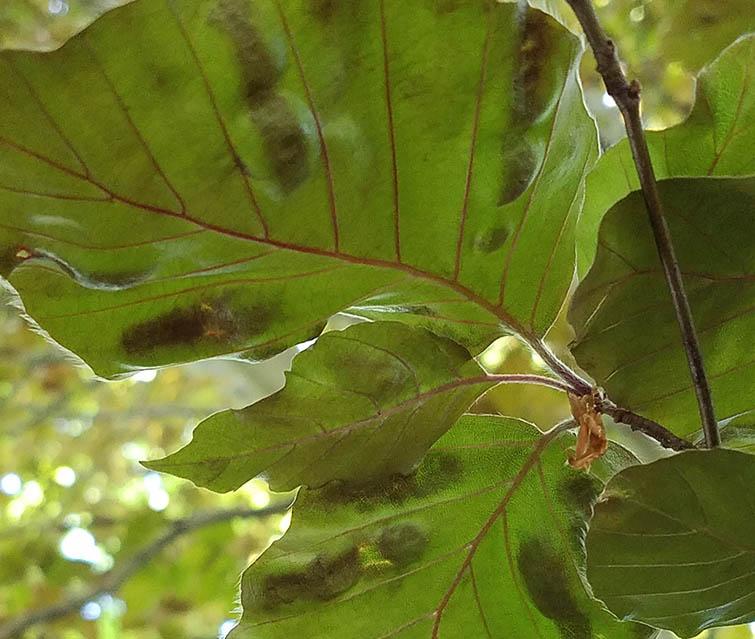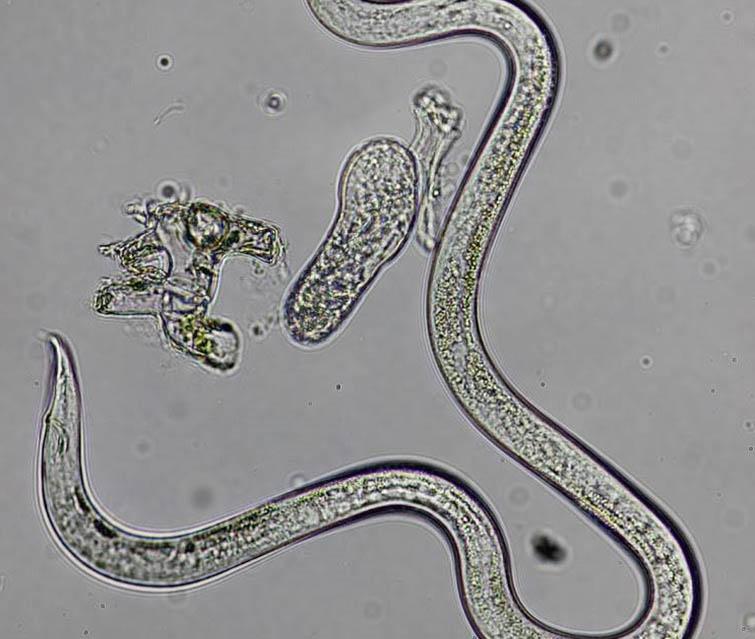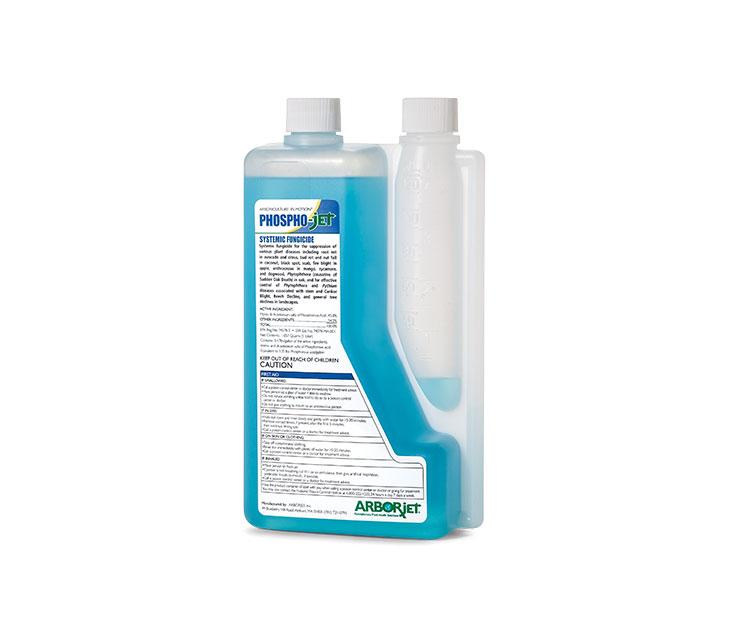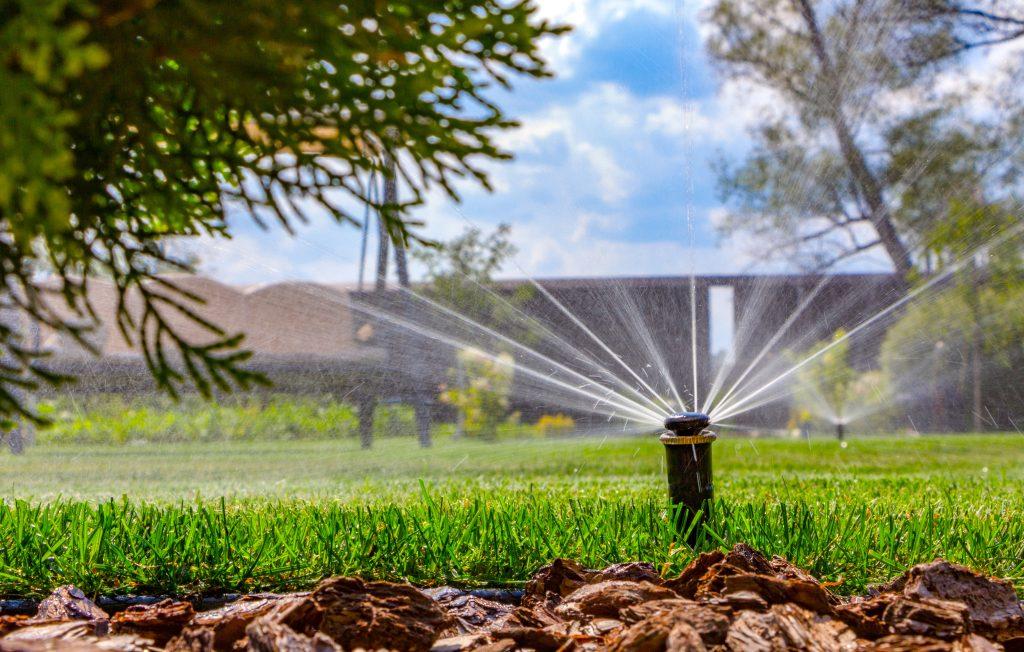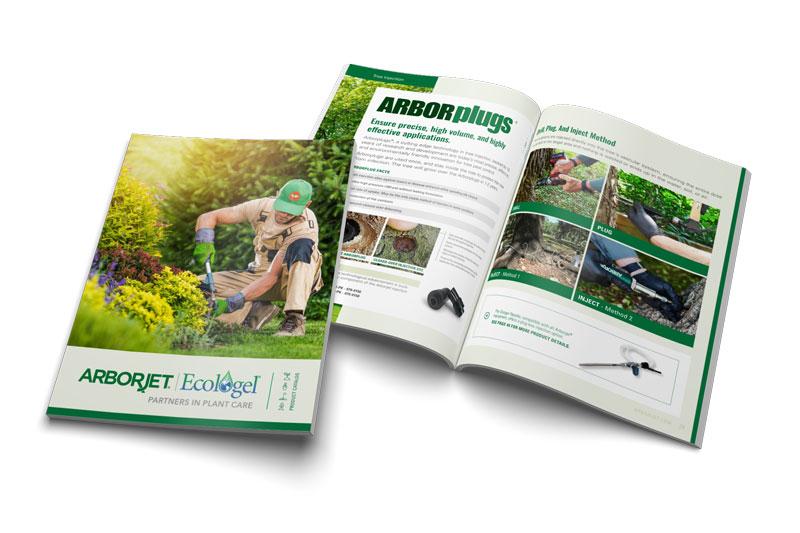Beech Leaf Disease
Beech Leaf Disease (BLD) is a new disease of beech trees (Fagus spp.) that has been identified and observed in forest areas in Eastern USA and Canada. The cause of this disease is a foliar nematode species, Litylenchus crenatae n. sp., newly described from Japan on Japanese beech,.
Common Symptoms
Early symptoms of BLD include dark-green striped bands between lateral veins of leaves and reduced leaf size. Banded areas usually become leathery-like, and leaf curling is also observed. As symptoms progress, aborted buds, reduced leaf production, and premature leaf drop lead to an overall reduction in canopy cover, ultimately resulting in death of sapling-sized trees within 2-5 years and of large trees within 6 years. In areas where the disease is established, the proportion of symptomatic trees can reach more than 90%. However, it is noted that some variability in susceptibility has been observed among beech trees.
Treatments
Avoid moving beech trees from areas where there are known infestations. There is limited data on preventive or therapeutic treatments for BLD. Several products with nematicidal properties are being explored as potential options for management. Preliminary research data indicates that trees treated with PHOSPHOjet have significantly fewer nematodes and exhibit improved foliage condition compared to untreated checks.
References And Photo Credits
BLD signs on American beech leaves image taken by Kevin Lewis of Arborjet
BLD signs on European beech leaves; image by Kevin Lewis, Arborjet
Bands between lateral veins of American beech leaves; image by Kevin Lewis, Arborjet
Beech Leaf Nematode Photo –; image by The Bartlett Tree Research Lab

